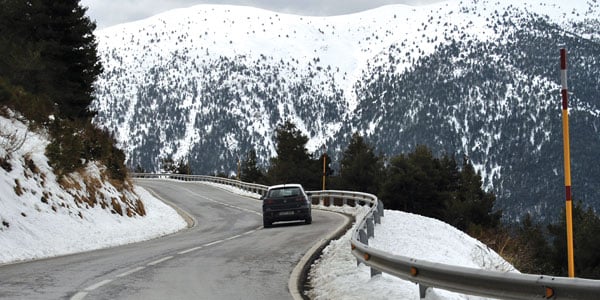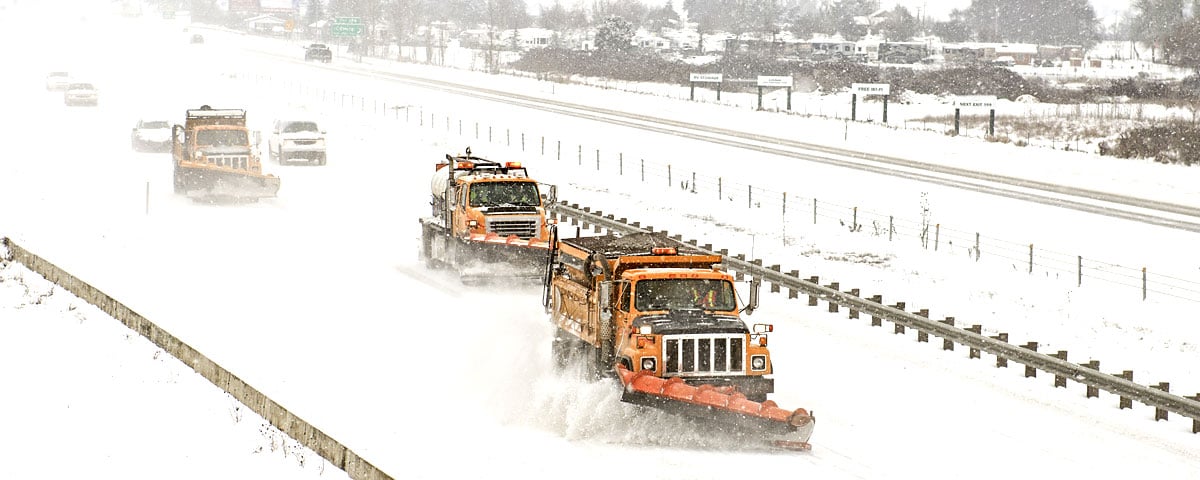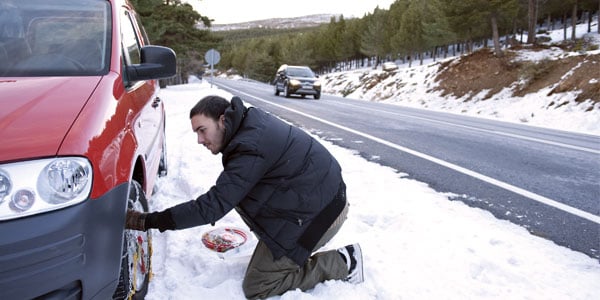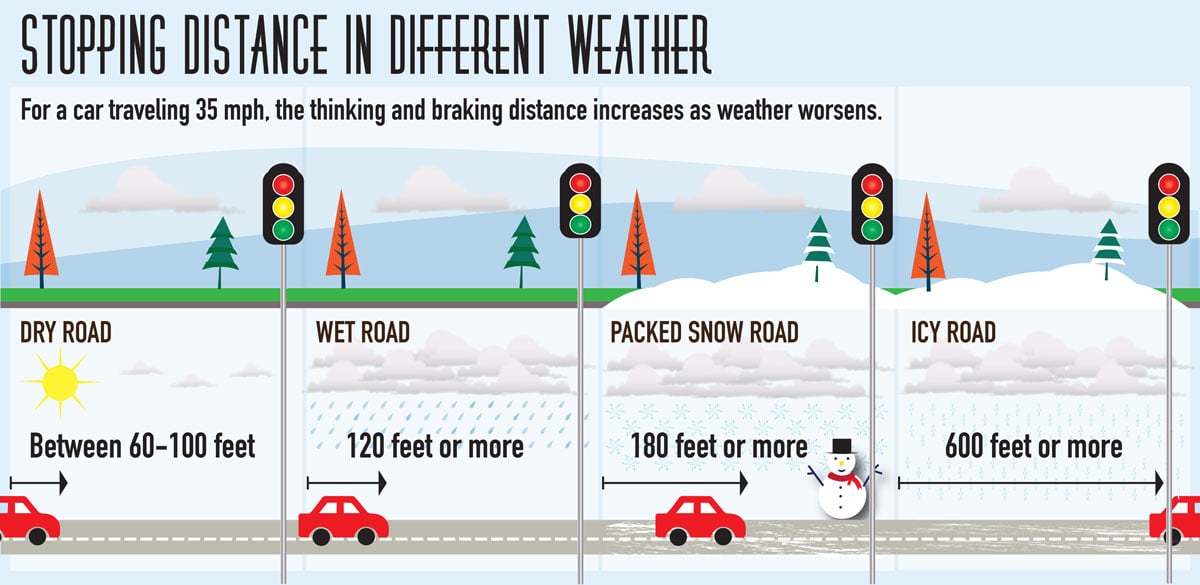-
Winter Driving Tips: Getting Real-time Road Conditions
People always want to talk about the weather. Not because it’s interesting, but because it has a huge impact on our daily lives. Especially if you’re driving in it. Lucky for all of us, technology has made predicting what the weather will do, and how to prepare for it, a lot easier.
Know what’s happening right now. Here in the west, we know the weather can change things. Current road condition resources are available with web cameras, current conditions, chain requirements, and extended forecasts.
Get your local forecast. AccuWeather offers a free hyperlocal app for Apple or Android devices. What is hyperlocal? It means you get a forecast based on your exact location.
Weather happens in the country too. That’s why the Weather Underground app for Apple and Android devices was created. Download it and get up-to-the-minute forecasts and information in your neck of the woods.
Plan Ahead in Any Weather
It’s probably no surprise that a lot of auto crashes happen in bad weather. Over 1.2 million of them a year. And almost half occur in the rain. You can avoid joining club fender bender by slowing down, especially on wet pavement and snow-covered roadways.
Get More Safety Tips -
Winter Driving Tips: How to Drive in All Conditions
Living anywhere in the Western U.S. means you’ll eventually drive in the rain, snow, ice, or fog. Sometimes all on the same day.
If you’re driving at just 35 miles per hour on dry pavement and hit the brakes, you won’t stop right away. That’s obvious. But did you know it will take up to 97 feet to come to a complete stop? Rain, ice, and snow require even more distance. This winter, give the guy in front of you plenty of room.
Here are a few more of our favorite tips and resources that can help you navigate anything winter might throw your way.
- Hydroplaning can happen on slick roads. The heavier the rainfall, the more likely your vehicle is to leave the pavement and ride on top of the water – even if it’s just for a moment. This guide will show you what to do if it ever happens to you.
- Stay safe while driving on ice. These how-to icy driving tips will help keep you and your car on the road.
- Become a snow driving expert. This guide will teach you stopping distance, how to drive downhill, and where the road is most dangerous.
- Recover from a skid. Learn how to pull out of a skid, especially when you don’t want to be drifting around a hairpin curve on an icy mountain road.
- Drive safely in the fog. Check out these fog-related tips for those times when the thick stuff makes driving difficult.
- Download a winter driving guide. This one from Car and Driver has plenty of advice, including the difference between traction control and stability control. Hint: stability control is better for winter driving.
Want to know more? Learn about snow tires here.
SHOP WINTER TIRES -
Winter Driving Tips: How to Drive in Snow
According to the Federal Highway Administration, about a quarter of weather-related vehicle crashes occur on snowy, slushy or icy pavement and 15 percent happen during snowfall or sleet.
Now for the good news. With the right preparation, you can travel safely even when the weather turns on you. Hint: properly inflated tires in good condition are near the top of the list. This is a must so you have the traction you need.
When you find yourself driving on snow or you’re caught in a storm, remember the following advice on vehicle handling.
How to Drive on Snow and When It’s Snowing
- Here’s a winter driving checklist to prepare and stay safe.
- Clear off snow from windows, mirrors and roof before you leave. When you brake, snow on top can slide forward and cover your windshield.
- Brush off snow from your lights, so you have the best light on the road and other drivers can see you.
- Reduce your speed and leave more space between you and the vehicle ahead. A good following distance is about eight to 10 seconds from the other vehicle, depending on your tire tread, weight of your vehicle, road slope, amount of snow on the road, and visibility. You may want even more.
Stopping Distance on Packed Snow
- How much stopping distance will you need? For the reasons above, safe stopping distance varies by vehicle. For a cars traveling 35 mph on dry pavement, it can take anywhere from 60 to 97 feet for thinking and braking distance. Double that for driving on wet pavement. Triple it for packed snow. Ten times for icy roads. (See this stopping distances chart for calculations at multiple speeds.)
Avoid Skids
- Avoid sudden stops, abrupt downward gear shifts and quick direction changes. Brake gently to avoid skidding or sliding. If the wheels lock up, ease off the brakes.
- Know what to do before you go into a skid. Skid car classes on how to drive on slick roads are a great idea for young drivers and anyone else traveling by road a lot in winter.
- The rules for getting out of a skid depend on a lot of factors: whether you have anti-lock brakes (ABS), if you have front- or rear-wheel drive, if the road is icy, if you’re going downhill, if you have extra weight in your vehicle. Read more about skid correction.
- The way to drive downhill on packed snow depends on whether you have ABS. If so, start at the top of the hill as slowly as possible. Leave your auto in normal drive gear and use light, steady pressure on the brake pedal to stay at a safe speed. This allows your antilock braking system to maintain traction by making sure all four tires slow at the same rate when you apply the brakes. (Learn more here.) If you don’t have ABS, proceed slowly and lightly pump your brakes on the way down.

- Don’t be overconfident just because you have all-wheel drive (AWD). Here’s why. You'll get the best traction for driving in winter conditions with snow tires mounted on all four wheels.
Use Extra Caution
- Stay in your lane, especially when visibility’s bad from driving snow. Think twice about passing. More hours of darkness and foul weather mean we just don’t see as well on the road in winter.
- Give trucks and snowplows plenty of room. Stay well into your lane and don’t follow closely. Big vehicles blow a lot of snow around which lowers visibility.
- NEVER pass big vehicles on the right. Debris, rocks and ice that can crack your windshield get sprayed in all directions from snowplows.

- Don’t drive through snowdrifts. They may cause your vehicle to spin out of control.
- When it’s snowing, don’t use your brights. They will reduce, not improve, road visibility.
- If you’re noticing snow turn to sleet or ice, kick your defroster into high. If ice builds up on your windshield pull over when you’re in a safe place and use an ice scraper. Don’t try to squint through a small section of your windshield.
- Use extreme caution when approaching off-ramps, bridges and shady spots where snow or ice on the road may be worse.
- Never use cruise control in snow or when there’s a chance of ice. It can cause your tires to spin faster when you hit a slick spot then fishtail your vehicle when the tires regain traction.
About Using Snow Chains
- Carry chains and know how to use them, including which wheels you need to put them on.
- Near chain-up and removal areas, slow down even more and watch for people in the road.

- If you have to pull over because conditions are too bad to go on, get as far off on the shoulder as safely possible, turn off your headlights and turn on your hazard lights.
Remember that your best bet for driving this season is to make sure your tires can handle the winter conditions. Last but not least, be flexible. Sometimes it makes the most sense to stop somewhere for a while or the night to wait out the weather.
Read our winter driving series to learn how to avoid hydroplaning, to drive when it’s icy or foggy, and get real-time road conditions by state.
SHOP WINTER TIRES
